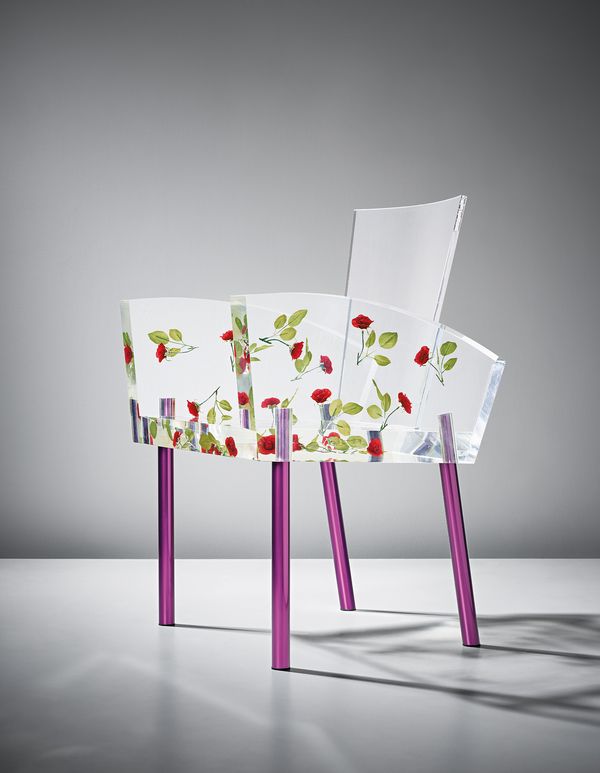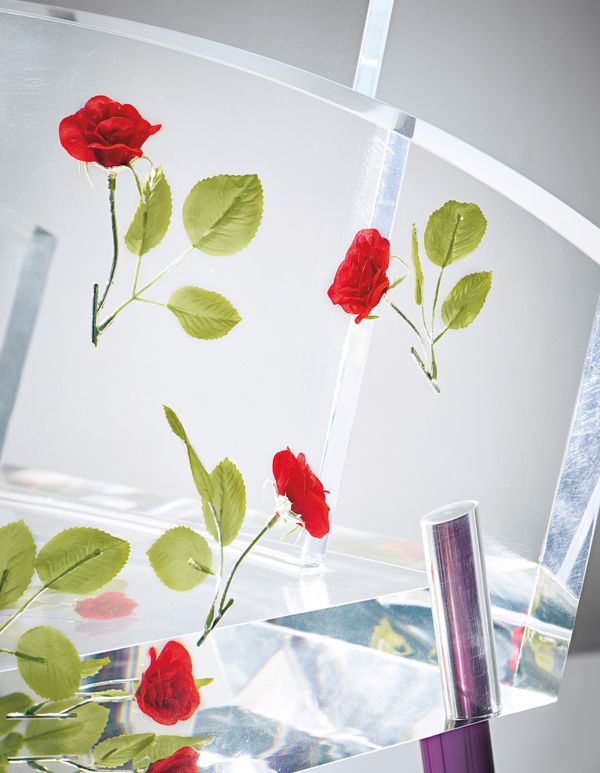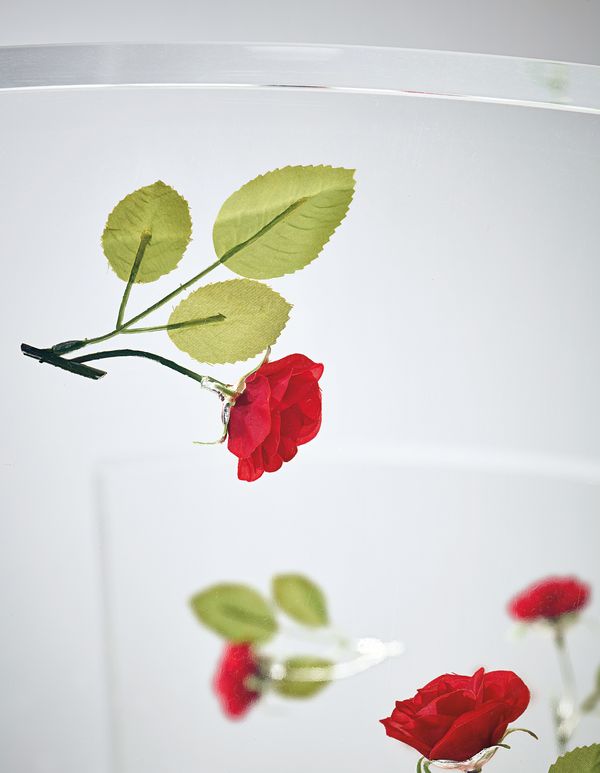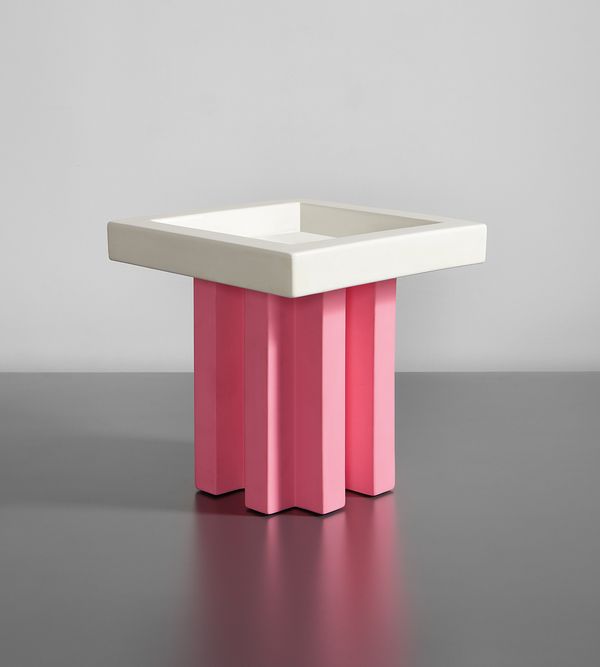Shiro Kuramata 'Miss Blanche' chair, designed 1988.
The 20th-century dream has been to 'go even faster,' but, in the next century, [I] think this will be to 'float even more.'
— Shiro Kuramata
Shiro Kuramata was one of the greatest designers of the 20th century. A brilliant and complex talent, he helped push modern Japan into becoming a renowned exporter of creativity, grace and technique. Kuramata designed a series of remarkably beautiful interiors, almost all of them now destroyed. His furniture has survived and serves as his principle legacy. It is the 'Miss Blanche' chair that most powerfully embodies his poetic approach to design. It combines an unnerving kind of beauty, a strong narrative, and a commitment to the craft values of making.
Named after the central character in the famed play A Streetcar Named Desire, Blanche Dubois, the chair resonates with the idea of her tragic beauty, shelled in dreamlike delusion. It is impossible not to be touched by the serene seeming beauty of a graceful transparent object, in which roses float in air, held in place by nothing tangible. The chair seems effortless. However, the craftsmanship behind the creation of the chair was so demanding that many of the craftsmen were reluctant ever to work with Kuramata afterwards.
Working through trial and error, Kuramata's craftsmen found that pouring liquid acrylic resin to various heights of the mould, then dropping in the flowers, waiting eight hours for the acrylic to harden, and subsequently repeating this created the best effect. The roses needed to be held in position with tweezers until the resin hardened enough to ensure that they did not sink. Care was taken to make sure there was a good spread of flowers throughout the mould, and that they made a good pattern. The first batch of rose-studded acrylic sheet yielded just eight useable chairs, with one failure.
A total of 56 'Miss Blanche' chairs have been produced over the years — a number that reflects Kuramata's age at the time of his death. Kuramata experimented with real roses and expensive artificial flowers, but cheap acrylic flowers turned out to work best in retaining colour and shape.
A work by a close friend and pivotal design influence: Ettore Sottsass 'Large fruit stand', 2001
Three crucial relationships demonstrate the significant influence that Kuramata has left in the world of design. Japanese fashion designer Issey Miyake, who still collects his work, commissioned him to design some of his most beautiful shops. Kuramata was also a close friend of Italian architect and designer Ettore Sottsass, who later invited Kuramata to join the Memphis Group that Ettore founded in 1981. British architectural designer John Pawson was so inspired by the experience of working in Kuramata's studio in Japan that he returned to England and eventually began his own practice in 1981.
The 'Miss Blanche' is included in the following important and international museum collections: Museum of Modern Art, New York; Museum of Modern Art, San Francisco; DMA, Dallas; M+ Museum, Hong Kong.



